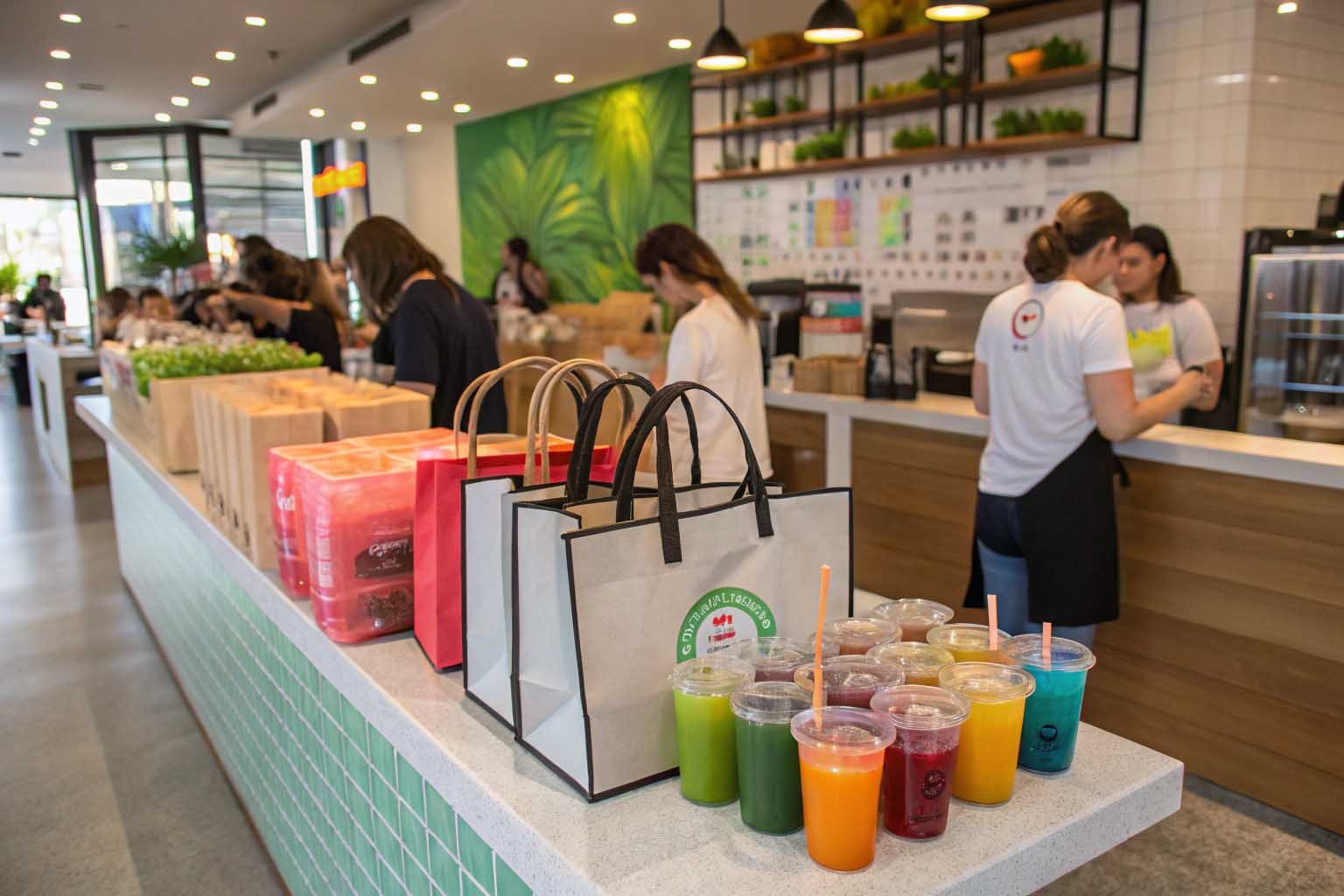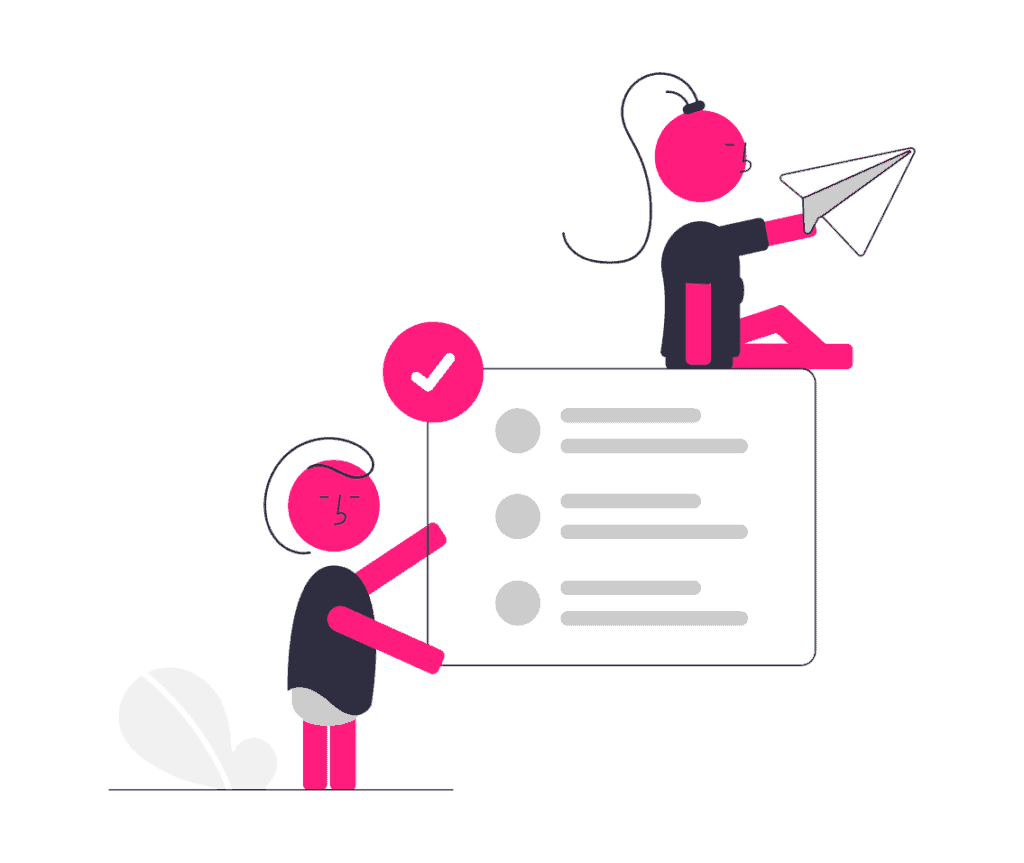Takeaway packaging is changing fast. Plastic is out. But is paper really the best replacement?
Non-woven takeaway bags are a cleaner, stronger, and more sustainable solution for modern food delivery businesses.

You’ve probably seen them—simple-looking fabric-style bags that feel soft but hold a surprising amount of weight. Нетканый материал takeaway bags are rising in popularity because they hit the sweet spot between affordability, performance, and eco-consciousness. As food delivery expands, especially post-pandemic, restaurants and cafes are looking for packaging options that reflect their brand values and deliver on function. That’s exactly where non-woven bags shine.
What are Non-Woven Takeaway Bags and Why Are They Gaining Popularity?
In the world of packaging, non-woven bags quietly stand out. They’re not flashy, but they do everything well.
Non-woven bags are made from polypropylene fibers bonded by heat—not woven—making them strong, light, and versatile for food packaging.

They’re different from both plastic and paper. The structure is formed without weaving or knitting, which results in a lightweight yet strong material. Unlike paper, non-woven bags hold their shape when wet, which makes them a better choice for transporting moist or greasy foods. They can be laminated for water resistance or even insulated to keep hot food warm longer. And because they can be printed easily, they double as marketing tools for restaurants.
Materials and Production Benefits
| Характеристика | Мешки из нетканого материала | Бумажные пакеты | Plastic Bags |
|---|---|---|---|
| Водонепроницаемость | Good (laminated) | Бедный | Превосходно |
| Возможность многократного использования | Высокий | Низкий | Very low |
| Возможность печати | Превосходно | Хорошо | Умеренный |
| Eco Footprint | Lower emissions | High water use | High pollution |
| Настройка | Легко | Limited | Умеренный |
Advantages of Using Non-Woven Takeaway Bags for Food Businesses
Non-woven takeaway bags are becoming the go-to choice for eco-conscious restaurants and cafés. They strike a practical balance between environmental responsibility and business needs. Let’s dive into the core advantages.
| Преимущество | Описание |
|---|---|
| Lightweight & Easy to Carry | Easy for delivery staff to transport; customers also find them convenient for reuse. |
| Многоразовые | Unlike single-use plastic or paper bags, these are durable and long-lasting. A single bag can be reused multiple times, drastically reducing waste. |
| Recyclable Material | Made from polypropylene (PP), which can be recycled into new products like plastic lumber or storage bins when collected and processed correctly. |
| Low Production Footprint | Compared to paper bags, non-woven bags consume less water, release less pollution, and leave a smaller carbon footprint. |
| Экономически эффективный | The low per-unit cost in mass production makes them ideal for budget-conscious F&B operators. |
| Настраиваемый | High printability allows vibrant logos, brand colors, and QR codes—turning every delivery into a brand exposure opportunity. |
| Strong Load-Bearing Capacity | Non-woven fabric can support heavier loads and resist tearing, making it suitable for dishes with sauces or drinks. |
| Versatile Styles & Sizes | Whether you serve sushi, soup, pizza, or bubble tea—there’s a non-woven bag to match. |
| Water/Oil Resistant (Laminated) | Laminated versions offer better moisture resistance, keeping food secure and preventing leaks. |
| Thermal Insulation | Insulated non-woven bags help preserve food temperature—ideal for long-distance delivery. |
Business Insight:
Many of our food service clients reported a noticeable improvement in customer satisfaction when switching to non-woven bags. Customers appreciate the bag’s strength and are more likely to reuse it, reinforcing your brand each time they do.
The Drawbacks: Are There Any Downsides to Non-Woven Takeaway Bags?
While non-woven bags offer many benefits, they’re not a perfect solution. Understanding their limitations helps businesses use them more responsibly and strategically.
| Disadvantage | Описание |
|---|---|
| Not Biodegradable | Unlike paper, non-woven PP fabric doesn’t decompose quickly, posing environmental concerns if not reused or recycled. |
| Recycling Challenges | These bags need to be collected, sorted, and processed correctly—yet most local facilities are not equipped for it. |
| Sustainability Relies on Reuse | If used only once, their environmental impact can outweigh that of paper bags. Maximizing reuse is key. |
| Laminated Bags Are Less Recyclable | Laminated versions have mixed materials that complicate recycling, often ending up in landfills. |
| Prone to Aging | Over time, especially with sun exposure or high humidity, the fabric can become brittle or tear more easily. |
Key Takeaway:
The real eco value of non-woven bags lies in encouraging long-term use. Offer incentives like discounts for customers who bring back bags or design them to be repurposed—this transforms a packaging item into a lifestyle tool.
How Non-Woven Takeaway Bags Outperform Plastic and Paper Alternatives?
Let’s be honest. Neither plastic nor paper truly solves the eco problem.
Non-woven bags last longer, resist damage better, and offer real sustainability when reused and recycled.

Plastic bags are convenient but pollute oceans1 and take centuries to break down. Paper bags degrade fast2 but collapse when wet. Non-woven bags find the balance—they can handle spills, steam, and repeated use. Their structure is durable enough to handle heavy items, and they hold up in rain or kitchen steam. Restaurants that switched to non-woven often told me they stopped worrying about bags breaking mid-delivery.
Side-by-Side Performance
| Характеристика | Non-Woven | Plastic | Paper |
|---|---|---|---|
| Moisture Resistance | Хорошо | Превосходно | Бедный |
| Load Capacity | Высокий | Умеренный | Низкий |
| Продолжительность жизни | Long | Very short | Short |
| Environmental Cost | Low (when reused) | Высокий | Высокий |
How to Choose the Right Takeaway Bag for Your Restaurant or Café?
Choosing the wrong bag isn’t just inconvenient—it reflects on your brand.
Match the bag type to your food type, delivery distance, and brand image to make the best choice.

I tell clients to start by listing what they serve. Is it hot? Oily? Moist? Cold drinks? Non-woven bags—especially laminated or insulated3 ones—fit most of those needs. Then, think of your brand. If you want to look upscale, clean printing on a reusable bag adds polish. You can even include QR codes or special prints. For short-distance deliveries with dry food, regular non-woven is enough. For anything hot, wet, or heavy, go for laminated or insulated versions.
Matching Bag Types to Business Needs
| Food Type | Recommended Bag |
|---|---|
| Oily/Hot Foods | Laminated Non-Woven |
| Cold Drinks | Insulated Non-Woven |
| Dry Snacks | Regular Non-Woven |
| Heavy Meals | Thick Handle Non-Woven |
| Branded Promotions | Custom-Printed Non-Woven |
Are Non-Woven Takeaway Bags Truly Eco-Friendly and Sustainable?
It depends—only if they’re reused and recycled properly.
Non-woven bags are sustainable when reused multiple times and recycled correctly, thanks to their durability and lower carbon production.

Изготовлено из polypropylene4, they can be recycled into plastic lumber or playground equipment. Their production creates less air and water pollution compared to paper manufacturing. And when made from recycled PET bottles, they actively remove waste from the system. But sustainability doesn’t just come from materials—it comes from behavior. That’s why I always recommend brands add a simple reuse message on each bag.
Environmental Impact Breakdown
| Sustainability Factor | Performance |
|---|---|
| Возможность многократного использования | Превосходно |
| Recyclability | Good (with facilities) |
| Pollution During Production | Низкий |
| Carbon Emissions | Lower than plastic or paper |
| End-of-Life Disposal | Needs customer awareness |
Заключение
Non-woven takeaway bags offer a smart balance of function, affordability, and eco-consciousness—when reused and recycled, they clearly outshine both plastic and paper options.
-
Understanding the impact of plastic pollution on oceans can inspire action and promote sustainable alternatives. ↩
-
Learn about the quick degradation of paper bags and their practical limitations to better assess their use in various situations. ↩
-
Discover the advantages of laminated or insulated bags for keeping food hot or cold during delivery, ensuring quality and satisfaction. ↩
-
Explore the advantages of polypropylene, including its recyclability and environmental impact, to understand its role in sustainable practices. ↩


